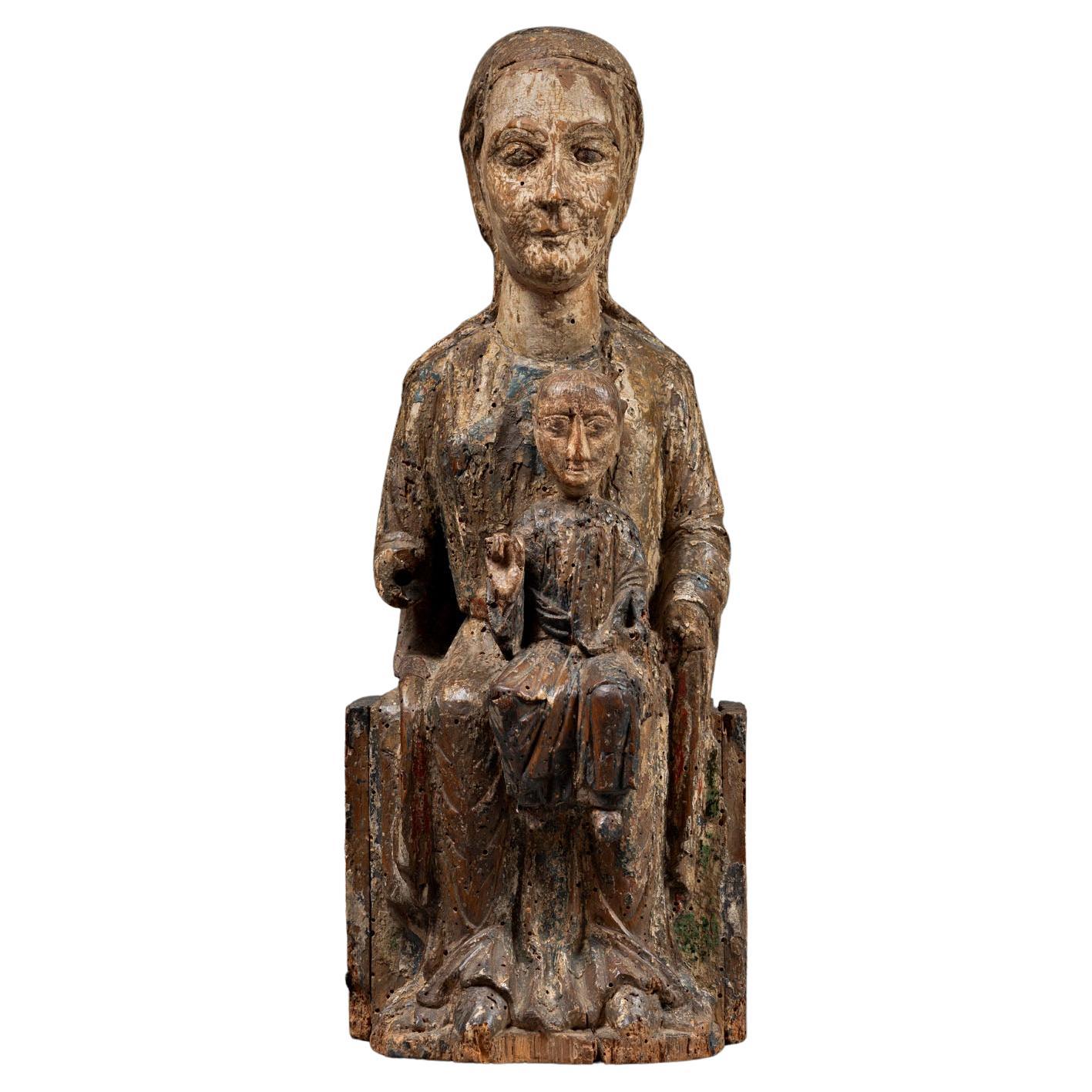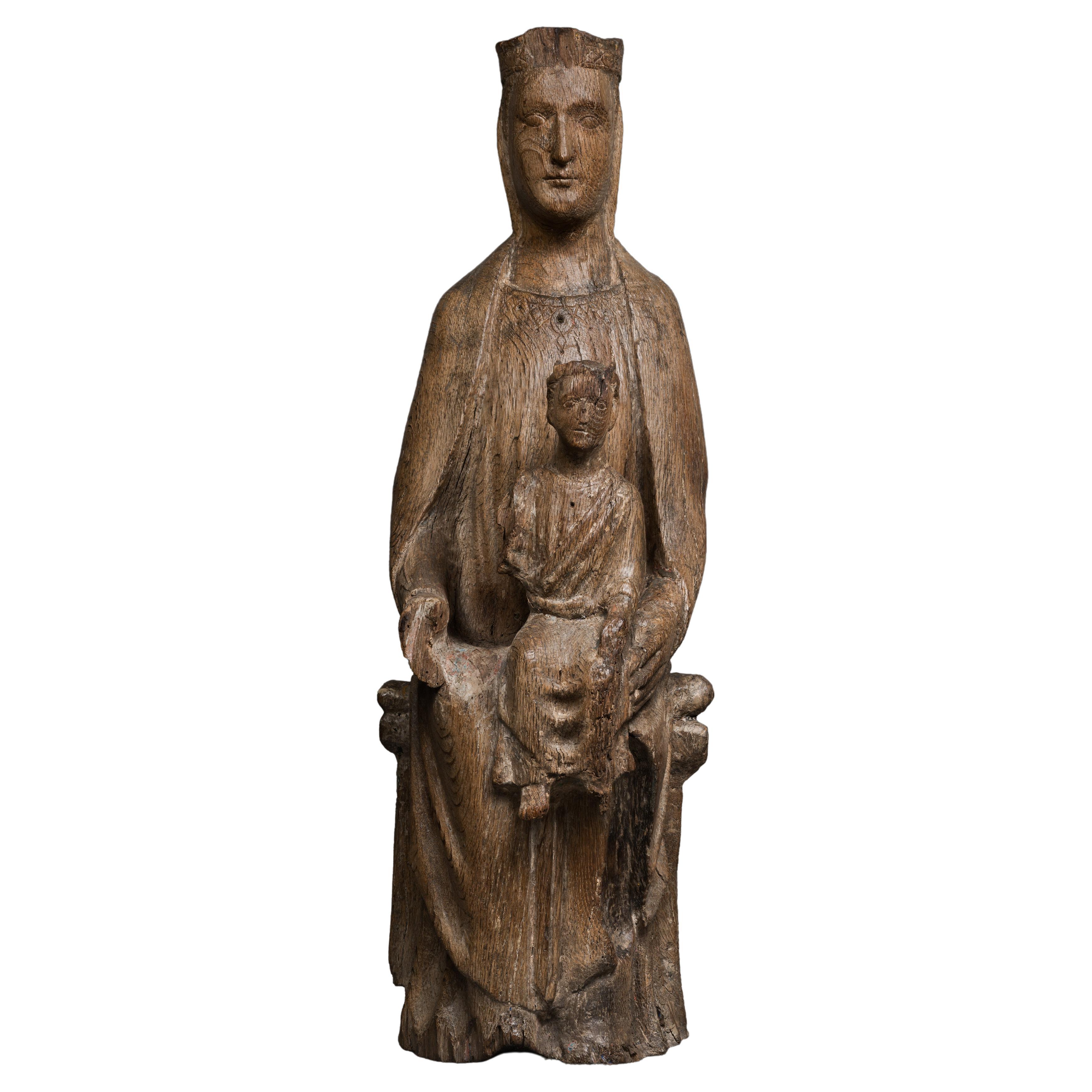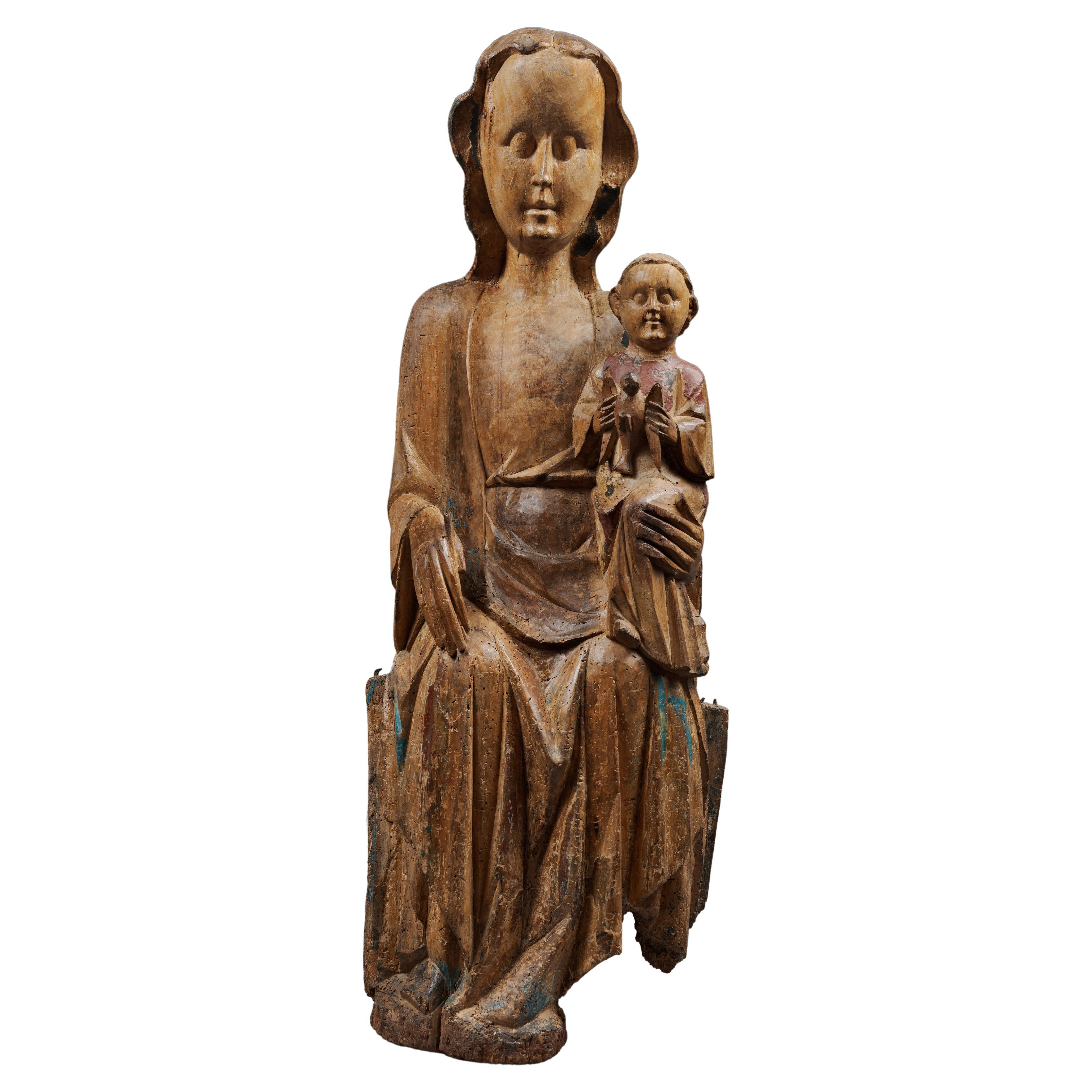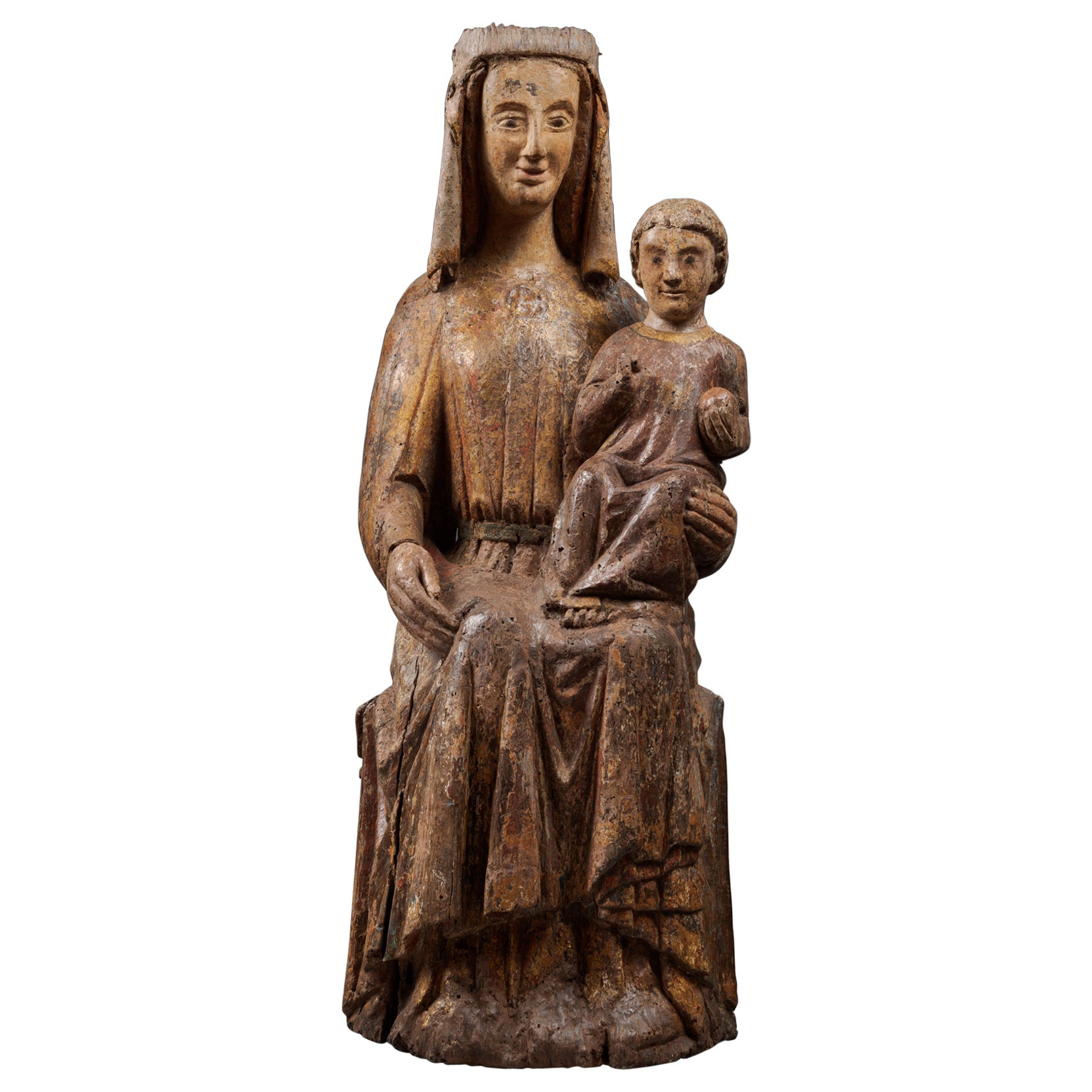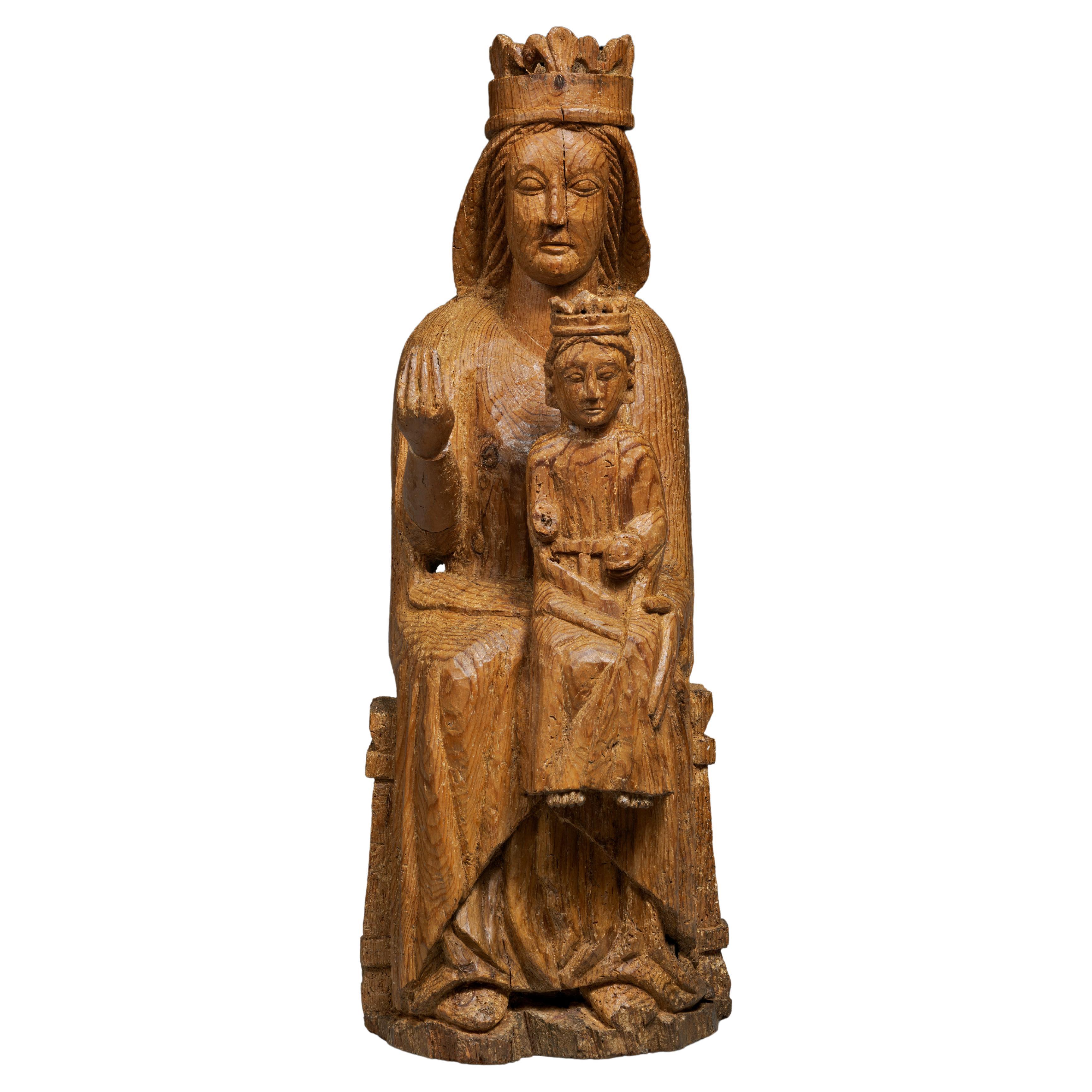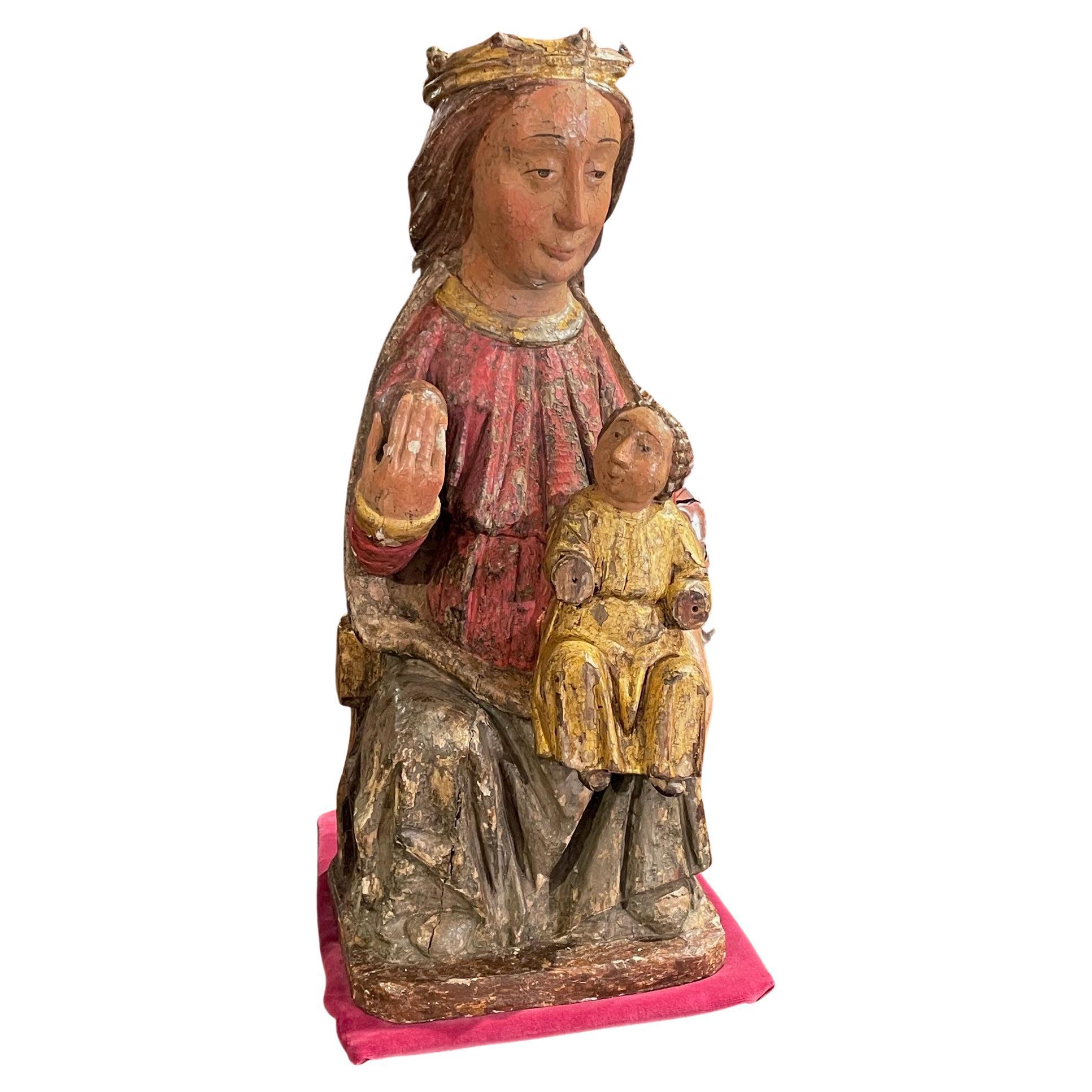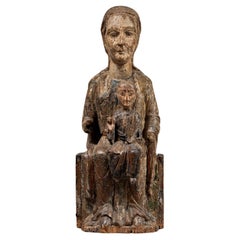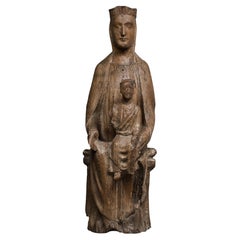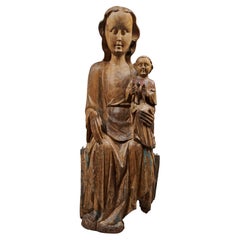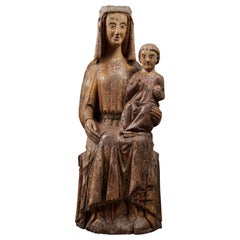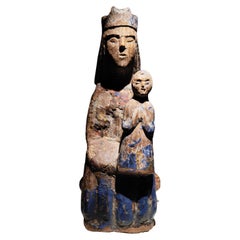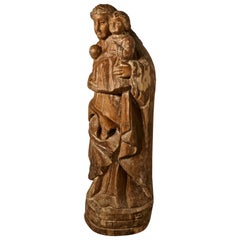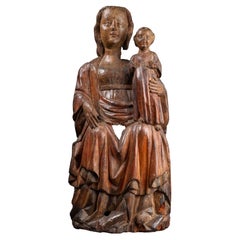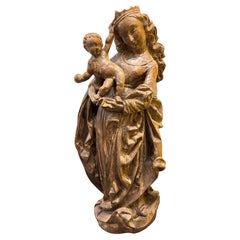Items Similar to Virgin and Child "Sedes Sapientiae", Seat of Holy Wisdom
Want more images or videos?
Request additional images or videos from the seller
1 of 6
Virgin and Child "Sedes Sapientiae", Seat of Holy Wisdom
$65,070.64
£49,464.55
€55,000
CA$91,447.02
A$99,450.71
CHF 52,392.86
MX$1,207,847.69
NOK 658,684.04
SEK 617,463.09
DKK 421,182.72
About the Item
Virgin and child sedes sapientiae, seat of holy wisdom
Origin : Northern Spain, castile, navarre or galicia.
Period : early 13th century.
Height : 85 cm
Length : 23.5 cm
Depth : 19 cm
Important traces of polychromy
Basswood or poplar wood
During the 12th century, the Virgin Mary appears in churches sitting majestically and used as throne by her son. She is called Sedes Sapientiae meaning Seat of Holy Wisdom.
She is then depicted only for her role as Theotokos the mother of God. This function has been proclamed during the Council of Ephesus in 431 when Christ was declared to have been born God.
The figure of the Virgin and Child enthroned was an iconographical theme particularly in vogue during the Middle-Ages. Thanks to pilgrimages this model was depicted evrywhere in Europe : France, Germany, Belgium, Scandinavian countries, England, Italy or Spain.
The Virgin is seating on a throne and presents the Christ Child with her left hand. He is seating frontally, resting on her left knee.
The Virgin wears supple garments, a belted dress with a round neckline and a cloak falling over her right knee in vertical pleats.
Her crowned head shows fine features, a straight nose, a small mouth and a short veil up on her forehead cast backwards.
Jesus is wearing a red cloak over a long tunic from which appear his feet.
The position of the child is not as hieratic and frontal than during the early 12th century nevertheless his face stays oriented towards worshippers. Moreover, from the 13th century onwards the Christ Child will seat sideways.
The similarity between the faces of the Virgin and the Christ Child shows that He really is the progeny of Mary. We can notice the likeness in the profiles and the gazes. The appearance of a middle aged man given to the Christ Child has to express Jesus existed even before his birth from Mary.
All of those characteristics allow us to locate this Virgin and Child in the North of Spain. This sculpture exhibits the diverse influences that the Spanish art received during the early 13th century. Indeed it is with the pilgrims of Santiago de Compostella, bringing with them influences from French Languedoc, Auvergnes and Ile-de-France that the cult of Mary flourished in Spain since the 8th century.
This Spanish Virgin and Child is a fine testimony of the Spanish 13th century art.
Literature
Jacqueline Boccador, Edouard Bresset, Statuaire médiévale de collection, tome I, Les clefs du temps, 1972
Ilene H. Forsyth, The Throne of Wisdom : Wood sculptures of the Madonna in Romanesque France, Princeton University Press, 1972
Galienne Francastel, Le droit au trône, un problème de prééminence dans l’art chrétien d’Occident du IVe au XIIe s, Paris, Klincksieck, 1973
- Dimensions:Height: 33.47 in (85 cm)Width: 9.26 in (23.5 cm)Depth: 7.49 in (19 cm)
- Materials and Techniques:
- Period:
- Date of Manufacture:Early 13th Century
- Condition:Minor structural damages.
- Seller Location:Saint-Ouen, FR
- Reference Number:1stDibs: LU3115329585942
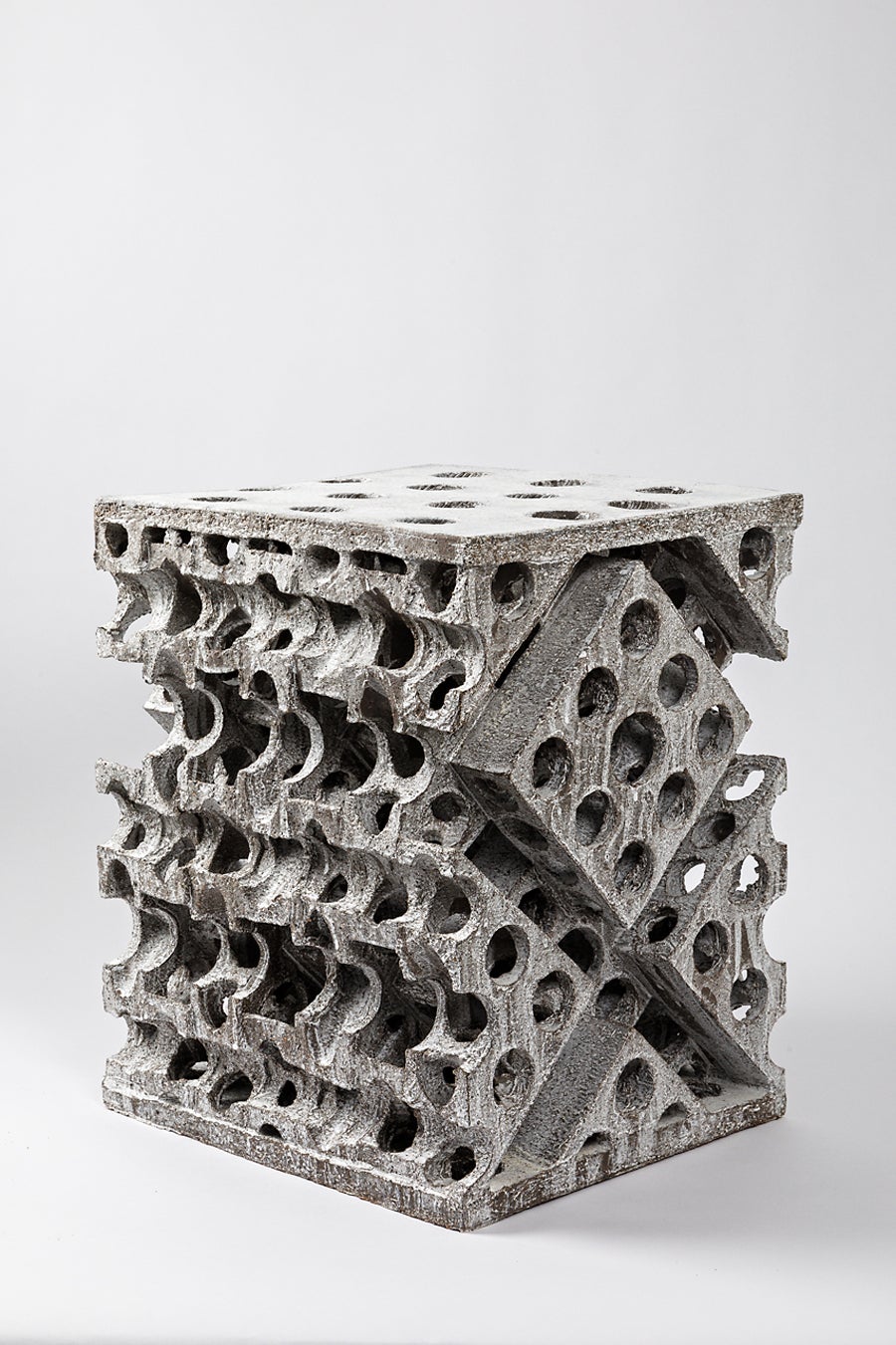
About the Seller
5.0
Vetted Professional Seller
Every seller passes strict standards for authenticity and reliability
Established in 2016
1stDibs seller since 2017
204 sales on 1stDibs
Typical response time: 2 hours
- ShippingRetrieving quote...Shipping from: Saint-Ouen, France
- Return Policy
Authenticity Guarantee
In the unlikely event there’s an issue with an item’s authenticity, contact us within 1 year for a full refund. DetailsMoney-Back Guarantee
If your item is not as described, is damaged in transit, or does not arrive, contact us within 7 days for a full refund. Details24-Hour Cancellation
You have a 24-hour grace period in which to reconsider your purchase, with no questions asked.Vetted Professional Sellers
Our world-class sellers must adhere to strict standards for service and quality, maintaining the integrity of our listings.Price-Match Guarantee
If you find that a seller listed the same item for a lower price elsewhere, we’ll match it.Trusted Global Delivery
Our best-in-class carrier network provides specialized shipping options worldwide, including custom delivery.More From This Seller
View AllExceptional Virgin and Child in Majesty or "Sedes Sapientiae", Throne of Wisdom
Located in Saint-Ouen, FR
Exceptional virgin and child in majesty
or “Sedes Sapientiae”, throne of wisdom
Origin: southwestern France.
Period: late 12th - early 13th cen...
Category
Antique 15th Century and Earlier Figurative Sculptures
Materials
Walnut
Important Sedes Sapientiae Virgin and Child also called "Throne of Wisdom"
Located in Saint-Ouen, FR
IMPORTANT SEDES SAPIENTIAE VIRGIN AND CHILD
ALSO CALLED « THRONE OF WISDOM »
ORIGIN: FRANCE, BURGUNDY
PERIOD: EARLY 13th CENTURY
Height : 75 cm
Len...
Category
Antique 15th Century and Earlier Figurative Sculptures
Materials
Oak
Virgin and Child in Majesty with a Bird
Located in Saint-Ouen, FR
Virgin and child in majesty with a bird
Origin: Southern Germany Or Austria
Period: Late 13tth - Early 14th Century
Height : 87.5 cm
Length : 32 cm
Depth : 19 cm
Lime ...
Category
Antique 15th Century and Earlier Figurative Sculptures
Materials
Wood
Important Virgin and Child in Majesty
Located in Saint-Ouen, FR
Important virgin and child in majesty
Origin : Germany Or Eastern France
Époque : Second Half Of The 13th Century
Height: 104.5 cm
Length: 3...
Category
Antique 15th Century and Earlier Figurative Sculptures
Materials
Oak
Virgin and Child in Majesty, also known as "Sedes Sapientae"
Located in Saint-Ouen, FR
VIRGIN AND CHILD IN MAJESTY, ALSO KNOWN AS "SEDES SAPIENTIAE"
ORIGIN : SPAIN, CATALOGNE
PERIOD: EARLY 13th CENTURY
Height : 95 cm
Width : 32 cm
Depth : 28 cm
Softwood
No polychromy
In the middle of the 12th century, the Virgin took her place in churches, seated in Majesty, serving as a throne for her son Jesus. She is then called Sedes Sapientiae, meaning the Throne of Wisdom.
At that time, she is not represented for herself and only exists because she has been designated as Theotokos, the mother of God, at the Council of Ephesus in 431, where the divine nature of Christ was proclaimed from his birth.
The upright and perfectly hieratic bust of this Virgin and Child in Majesty is seated on a throne-bench. She is dressed in a tunic with a rounded neckline and covered with a fine mantle placed on her narrow shoulders. The supple and natural drapery follows the lines of the body.
Large curls frame her face with delicate and regular features, a long straight nose, almond-shaped eyes, and small lips.
She supports the Infant Jesus with her left hand. Like his mother, he is dressed in a long tunic, and his little feet are visible in the folds. He holds a small sphere in his left hand, while with his right hand, he gestures in blessing. The face of Christ bears a strong resemblance to his mother’s one, and he gives a slight smile.
The position of the Child is no longer as hieratic, nor frontal or central as in the early 12th century, but his face still turns towards the faithful.
The 13th century indeed emerges as a period of transition in the artistic domain. The statuary, while retaining certain characteristics still belonging to the habits of the previous century, also develops new formal solutions.
As a result, Mary maintains a hieratic and frontal position, while her son shifts to place himself well to the left on her knee. Similarly, while the Virgin seems perfectly still, Jesus, on the other hand, appears much more animated, especially in the positioning of his hands. His left hand holds the orb, and judging by the raised right arm directed towards the faithful, one can easily imagine that he was making a gesture of blessing.
The influence of the Sedes Sapientiae from previous centuries still seems particularly prevalent in this work.
These few characteristics allow dating this Spanish Virgin...
Category
Antique 15th Century and Earlier Spanish Gothic Figurative Sculptures
Materials
Softwood
Virgin and Child in Majesty
Located in Saint-Ouen, FR
Virgin and child in majesty
Origine: castille
Epoque: early 14th century
Measures: Height: 72cm
Length: 30cm
Depth: 25cm
Polychrome and gi...
Category
Antique 15th Century and Earlier Figurative Sculptures
Materials
Wood
$41,408
You May Also Like
Seated Virgin with Child (Sedes Sapientiae) from the 12th Century in Spain
Located in Madrid, ES
Technique: Tempera and oil on wood
Dimensions: 25 x 11 x 8 cm
Description:
This exceptional work from the 12th century represents the Seated Virgin with Child (Sedes Sapientiae), standing out as an artistic treasure from medieval Spain. The portrayal of the Virgin enthroned with the Child on her lap is emblematic of Romanesque art, and this particular piece is a valuable and authentic example of that era.
The current polychromy belongs to the Gothic period and overlays the original Romanesque layer. It is crucial to highlight that the current state of the artwork is the original, without any cleaning interventions, imparting a unique authenticity.
The work exhibits architectural characteristics typical of Romanesque art, evident in the sides of the throne. The rigidity and symmetry characteristic of this style are reflected in the firm presentation of the Baby Jesus, noticeable in his gesture while holding his son. The Virgin wears a crown, symbolizing her royal character as the Queen of Heaven and Creation. Both figures retain traces of polychromy on the face and attire, adding layers of history and authenticity.
While similar Romanesque Virgin...
Category
Antique 15th Century and Earlier Figurative Sculptures
Materials
Fruitwood
18th Century French Carved Statue of Madonna and Child
Located in Godshill, Isle of Wight
18th century French carved statue of Madonna and Child.
This charming piece has been rescued from a ecclesiastic clear out in the southern part of France
The statue is carved fro...
Category
Antique Mid-18th Century Mission Figurative Sculptures
Virgin and the Child, Mosan Region, Second Half of 13th Century
Located in Bruxelles, BE
A polychrome sculpture depicting the Virgin and the Child
Mosan region, second half of 13th century
Polychrome wood
73 x 29 X 12 cm
Provenance :
Former Belgian private collection from the beginning of the 20th century
This remarkable early artwork portrays the Enthroned Virgin and Child, also known as Sedes Sapientiae, which translates to the 'Seat of Wisdom...
Category
Antique 15th Century and Earlier Belgian Medieval Figurative Sculptures
Materials
Wood
Antique Statue of Virgin Mary and Child , 19th Century
Located in Basildon, GB
A Pine Carving of Virgin and Child signed E. Lechner. Carved in 15th Century style, a high relief with a hollowed back and depicting the crowned Virgin standing on contrapose with lo...
Category
Antique Mid-19th Century European Gothic Religious Items
Materials
Wood, Pine
Religious Statue of Our Lady and Child, 20th Century
Located in Lisbon, PT
This captivating 20th-century wood sculpture depicts Our Lady holding the Child Jesus, crafted from warm wood with a timeless elegance.
Standing at 84 cm tall, the statue exudes a s...
Category
20th Century Portuguese Baroque Figurative Sculptures
Materials
Wood
$2,910 Sale Price
20% Off
Wooden Madonna with Child Baroque Art Italy 17th Century with Export Certificate
Located in Madrid, ES
A Wooden Madonna with child Baroque art, Southern Italy, 17th century.
Measure: H: 71cm
Good condition for the time.
With Export Certificate to USA.
Category
Antique Early 17th Century Italian Baroque Figurative Sculptures
Materials
Wood
More Ways To Browse
13th Century
Virgin And Child
Christ With Child
Wisdom Sculpture
Jesus And Mary Figure Sculpture
Antique Erotic Furniture
Banana Tree
Bronze Egyptian Sculpture
Carved Marble Head
Patinated Plaster Sculpture
Small Metal Sculptures
South Africa Art Sculpture
Art Deco Glass Figurine
Balinese Carved
Balinese Wood
Bisque Sculpture
Bronze Faun
Bronze Musician
